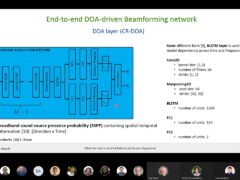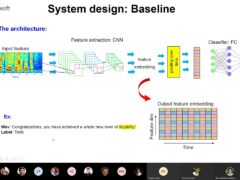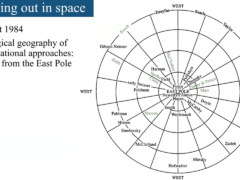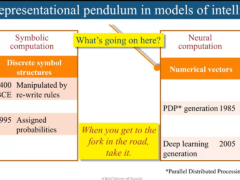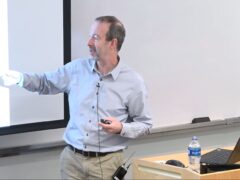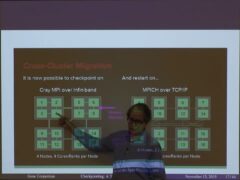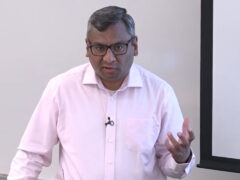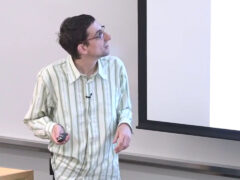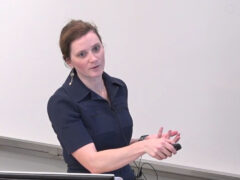Photo Sequencing
Dynamic events such as family gatherings, concerts or sports events are often captured by a group of people. The set of still images obtained this way is rich in dynamic content but lacks accurate temporal information. We propose a method for photo-sequencing – temporally ordering a set of still images taken asynchronously by a set of uncalibrated cameras. Photo-sequencing is an essential tool in analyzing (or visualizing) a dynamic scene captured by still images. The first step of the method detects sets of corresponding static and dynamic feature points across images. The static features are used to determine the epipolar geometry between pairs of images, and each dynamic feature votes for the temporal order of the images in which it appears. The partial orders provided by the dynamic features are not necessarily consistent, and we use rank aggregation to combine them into a globally consistent temporal order of images. We demonstrate successful photo sequencing on several challenging collections of images taken using a number of mobile phones.
Joint work with Tali Dekel (Basha) and Yael Moses.
Speaker Details
Shai Avidan received his Ph.D. degree from the School of Computer Science, Hebrew University, Jerusalem, Israel, in 1999. Today he is a member of the Faculty of Engineering at Tel-Aviv University, Israel. He was a Postdoctoral Researcher at Microsoft Research, a Project Leader at MobilEye, a startup company developing camera based driver assisted systems, a Research Scientist at Mitsubishi Electric Research Labs (MERL), and a Senior Researcher at Adobe. He published extensively in the fields of object tracking in video and 3-D object modeling from images. Recently, he has been working on Computational Photography. Dr. Avidan is an Associate Editor of PAMI and was on the program committee of multiple conferences and workshops in the fields of Computer Vision and Computer Graphics.
- Series:
- Microsoft Research Talks
- Date:
- Speakers:
- Shai Avidan
- Affiliation:
- Tel-Aviv University
-
-
Jeff Running
-
Series: Microsoft Research Talks
-
-
-
-
Galea: The Bridge Between Mixed Reality and Neurotechnology
Speakers:- Eva Esteban,
- Conor Russomanno
-
Current and Future Application of BCIs
Speakers:- Christoph Guger
-
Challenges in Evolving a Successful Database Product (SQL Server) to a Cloud Service (SQL Azure)
Speakers:- Hanuma Kodavalla,
- Phil Bernstein
-
Improving text prediction accuracy using neurophysiology
Speakers:- Sophia Mehdizadeh
-
-
DIABLo: a Deep Individual-Agnostic Binaural Localizer
Speakers:- Shoken Kaneko
-
-
Recent Efforts Towards Efficient And Scalable Neural Waveform Coding
Speakers:- Kai Zhen
-
-
Audio-based Toxic Language Detection
Speakers:- Midia Yousefi
-
-
From SqueezeNet to SqueezeBERT: Developing Efficient Deep Neural Networks
Speakers:- Sujeeth Bharadwaj
-
Hope Speech and Help Speech: Surfacing Positivity Amidst Hate
Speakers:- Monojit Choudhury
-
-
-
-
-
'F' to 'A' on the N.Y. Regents Science Exams: An Overview of the Aristo Project
Speakers:- Peter Clark
-
Checkpointing the Un-checkpointable: the Split-Process Approach for MPI and Formal Verification
Speakers:- Gene Cooperman
-
Learning Structured Models for Safe Robot Control
Speakers:- Ashish Kapoor
-
-



